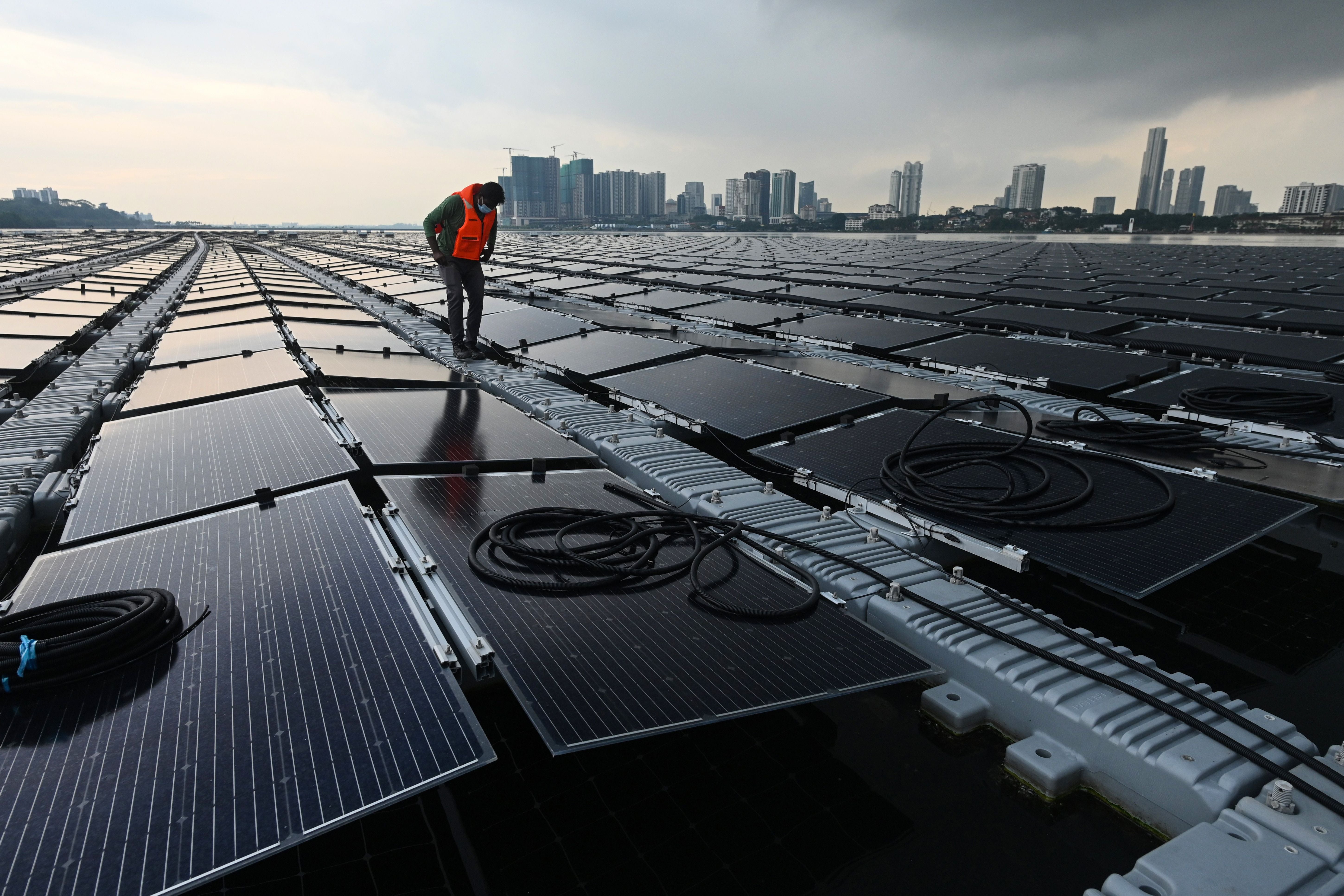Singapore builds huge floating solar farm at sea in bid to tackle climate crisis
Oceans are ‘new frontier’ in electricity production, says firm tasked with carrying out project

Your support helps us to tell the story
From reproductive rights to climate change to Big Tech, The Independent is on the ground when the story is developing. Whether it's investigating the financials of Elon Musk's pro-Trump PAC or producing our latest documentary, 'The A Word', which shines a light on the American women fighting for reproductive rights, we know how important it is to parse out the facts from the messaging.
At such a critical moment in US history, we need reporters on the ground. Your donation allows us to keep sending journalists to speak to both sides of the story.
The Independent is trusted by Americans across the entire political spectrum. And unlike many other quality news outlets, we choose not to lock Americans out of our reporting and analysis with paywalls. We believe quality journalism should be available to everyone, paid for by those who can afford it.
Your support makes all the difference.A growing push in Singapore to reduce the city-state’s greenhouse gas emissions and combat climate change has seen a sea of glimmering solar panels built off the country’s northern coast.
Reaching into the Johor Strait, which lies between the city-state and Malaysia, construction of the solar farm has seen 13,000 solar panels laid out at sea, according to a report from AFP.
With the ability to produce up to five megawatts of electricity, the solar panels can provide enough energy to power at least residential 1,400 flats year-round.
Shawn Tan, vice-president of engineering at Sunseap Group, the Singaporean firm tasked with carrying out the project, told AFP that the sea had presented a solution for a country with limited space on dry land for producing renewable energy.
“The sea is a new frontier for solar to be installed,” Mr Tan said.
Read more: Solar energy could hold the answer to a bright future
“After exhausting the rooftops and the available land, which is very scarce, the next big potential is actually our water area,” said Jen Tan, senior vice-president and head of solar in southeast Asia at Sembcorp Industries, a business working on another solar project for Singapore.
The new effort comes as Singapore seeks to address its record as one of Asia’s biggest per-capita carbon dioxide emitters.
With limited space, along with a lack of options for hydro-electricity and wind power, Singapore has faced logistical challenges in the push towards renewable energy.
Environmental advocacy groups have long accused the country of failing to do enough to address climate change, even as rising sea levels have become a growing threat to Singapore’s future.
Climate Action Tracker (CAT) said in its analysis that while Singapore has strengthened its efforts to combat climate change, its 2020 and 2030 targets have been “weak”.
“Singapore updated its 2030 target in March 2020, but the updated target is not an increase in climate action, contrary to the Paris Agreement requirement to scale it up,” CAT states on its website.
Furthermore, CAT says that while Singapore released a long-term low emissions development strategy in April last year, aimed at halving emissions from their peak in 2030 by 2050, the plan “shows a lack of commitment to reaching net-zero emissions, aiming to achieve net zero ‘as soon as viable’ in the ‘second half of the century’.”
“Singapore needs to substantially strengthen its 2030 Paris Agreement target, which could form the basis for a more ambitious long-term target,” CAT states.
Despite the country’s expansion of its renewable energy capacity, natural gas is still the primary energy source in Singapore, accounting for 96 per cent of electricity generated, the organisation said.




Join our commenting forum
Join thought-provoking conversations, follow other Independent readers and see their replies
Comments